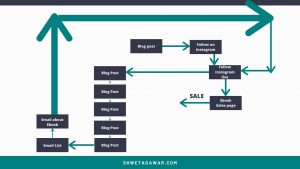If you haven’t noticed, conversion rate optimization (CRO) has become a more critical and powerful tool than ever for increasing revenue. For statistical satisfaction and tangible results, it’s hard to beat A/B testing. It’s one of the most heavily used CRO methods and is effective for testing everything from emails to landing pages. If you want to improve your bottom line, there’s typically no better place to start. But what if, after months of trying A/B testing, you still haven’t seen the rate of return on investment you had hoped for? One of these common A/B testing myths just might be sidetracking your success.
A/B testing. It’s one of the most heavily used CRO methods and is effective for testing everything from emails to landing pages. If you want to improve your bottom line, there’s typically no better place to start. But what if, after months of trying A/B testing, you still haven’t seen the rate of return on investment you had hoped for? One of these common A/B testing myths just might be sidetracking your success.
If it works for someone else, it will work for you. This is probably the most common myth about A/B testing. How many times have you read about huge increases in CRO thanks to something simple like adding a security badge or changing the color or shape of a button? Unfortunately, trends are not universal. Each business has its own unique audience and marketing needs. No matter how many studies or proven experiments have been done, the only way to know if it will work for you is to research and test the idea for yourself.
You should only make small changes. There’s nothing wrong with testing out a few details such as changing the color of a call to action button or making minor adjustments to your copy, but A/B testing isn’t just about sweating the small stuff. Don’t be afraid to make big changes to your marketing materials. In fact, some of the biggest improvements come from big changes. As the saying goes, the greater the risk, the greater the reward. But remember, risk management requires careful analysis and strategic marketing — which leads us to our next myth.
You don’t need to research the changes you make – that’s what the testing is for. A common misconception about A/B testing is that you can simply run a few random tests and then evaluate the outcome to determine what works and what doesn’t. You might get lucky a few times, but if you want to make a real difference, you’re going to have to conduct research first. Instead of taking wild stabs in the dark, form your A/B testing strategy around quantitative and qualitative insights and actionable data. Research bounce rates and abandonment points to learn what your customers are looking for and where you’re losing the most traffic. Consider where you have the highest, most qualified traffic and think of how you can build on that. In doing so, you’ll build a stronger testing plan with more realistic hypotheses and arguably, get better results.
A/B testing is all I need to do. Not happy with the results you’re getting? Perhaps you are too focused on testing. Creating a successful CRO strategy requires a multifaceted approach. A/B testing should not be viewed as a quick fix but as part of a long-term investment that encompasses everything from digital marketing and web analytics to usability testing and persuasive psychology.
Conversion rate optimization is a learning experience; so don’t be discouraged if you haven’t quite figured out what path is best for your business. When it comes to CRO, even seasoned marketers can struggle with where to focus their time and energy. A/B testing is a powerful tool and when done correctly it can help you uncover which strategies will generate and convert the most leads as well as give you valuable insights concerning customer intent and behavior.
Digital & Social Articles on Business 2 Community(63)








